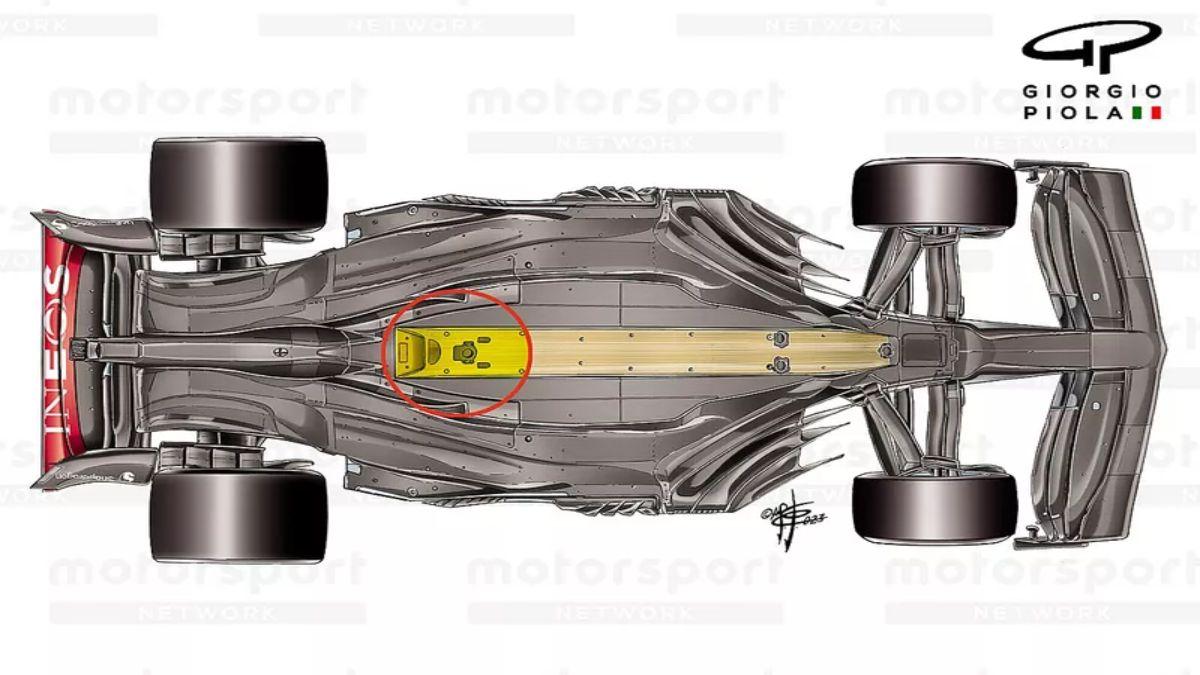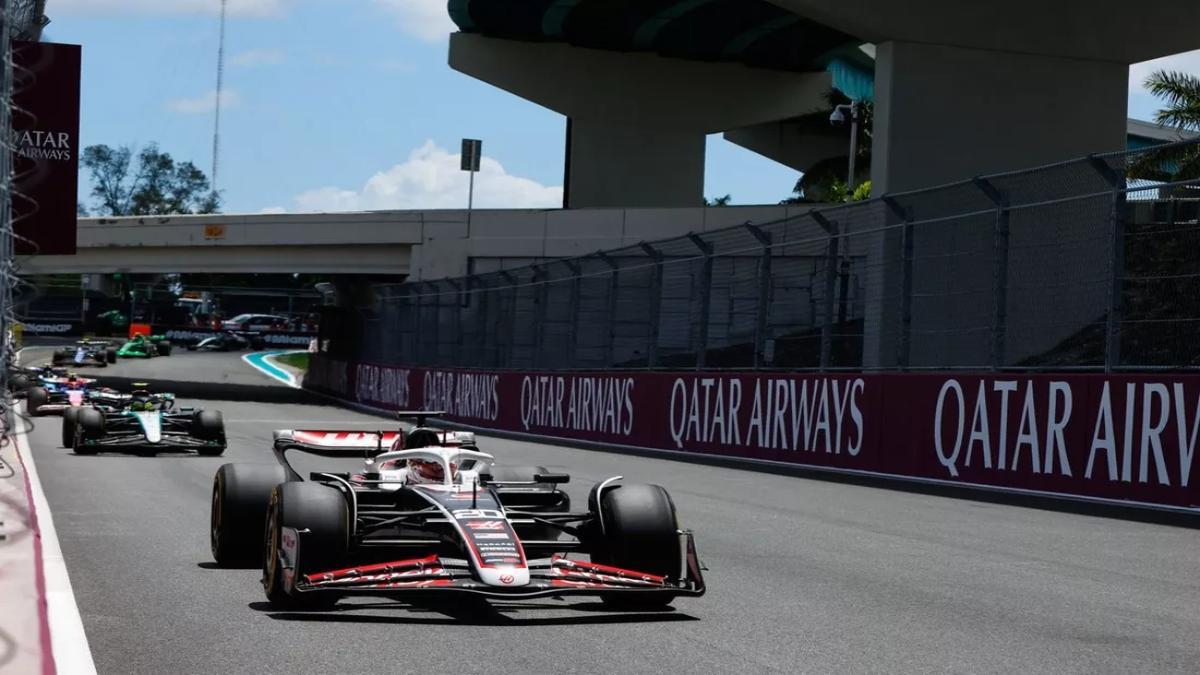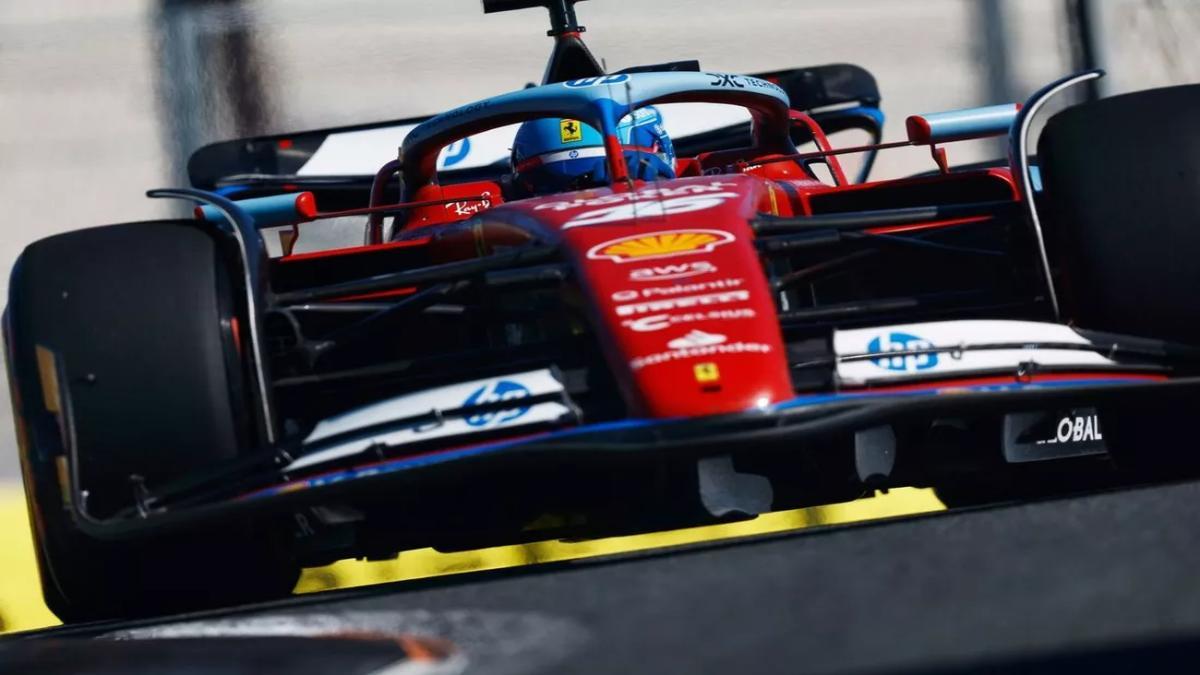(Motorsports news) In actuality, boards have been discovered to have worn down excessively only a few occasions in F1 history, the most prominent being Michael Schumacher’s disqualification from the 1994 Belgian Grand Prix. This makes it even more curious that two of the top teams tripped up on the same race weekend in an area of the car where teams are acutely conscious of there being no tight room for mistake.
The justifications for the rule violations appear to be quite evident, which is why both teams had to simply accept their fate with the stewards once the boards were discovered to be sufficiently worn away.
What the plank rules say:
Because there can be no more than 1mm of wear between a freshly fitted plank and one that’s been through all the rigors of a race, the tolerance between success and failure over plank legality is minute. The FIA can evaluate wear on the plank at four 50mm diameter holes drilled into the surface at specified points designated in the technical specifications to ensure compliance.
In the case of Leclerc and Hamilton, the rearmost hole failed the test. This hole must be located between 825mm and 1025mm ahead of the rear axle line on the car’s centerline. As noted in the main image, this provides some variation in how wear can occur on different cars, as there is no precise position for the drill hole, unlike the three holes at the front of the plank.
The drill holes in the plank (which, by the way, is no longer composed of wood but of a composite substance) are encircled by Titanium skids that are flush mounted. These provide additional wear resistance and are also strictly regulated in their design. The FIA has been closely watching this area with this new generation of cars, and it has already given several technical directives in reaction to anomalies in their design.
Following the disqualifications, one interesting discussion point was that the FIA did not inspect the planks on all of the vehicles. This is the usual procedure because the governing body would be unable to examine conformity on every aspect of every car after every F1 qualifying and race. That is why, in order to ensure compliance, it selects random elements from random cars each time.
Max Verstappen’s RB19, Charles Leclerc’s SF-23, Lewis Hamilton’s W14, and Lando Norris’ MCL60 were all picked to have their planks checked on this occasion. Red Bull and McLaren were given the go-ahead, but Ferrari and Mercedes were not.
The trigger points:
The technological reasons for the planks’ excessive wear are straightforward. The cars were running too low to the ground, which scratched them over the Austin weekend. The cause of this is the choice of rear ride height, which teams experiment with each weekend. However, it can be altered by fuel loading and even DRS use – as the aero load enters and exits the car.
On the F1 grand prix weekend, teams often have plenty of time to get their ride height into a sweet spot where the plank is not in danger of being worn away – yet the vehicle is low enough to offer optimal performance. This balance has proven more difficult to achieve at sprint events, where teams have only one practice session – rather than the three of a standard F1 weekend – to lock in their settings before qualifying.
Because of the compressed timeframe, it is impossible to cover the qualifying and long-run programs that are normally done. Any ride height calculations done during this F1’s FP1 session must account for the additional competition running that has been added to the weekend’s schedule, as there will be more competitive sessions taking place once the cars’ settings have been locked in.
Also read: Ferrari had “something wrong in our numbers” in the F1 US GP, according to Leclerc









